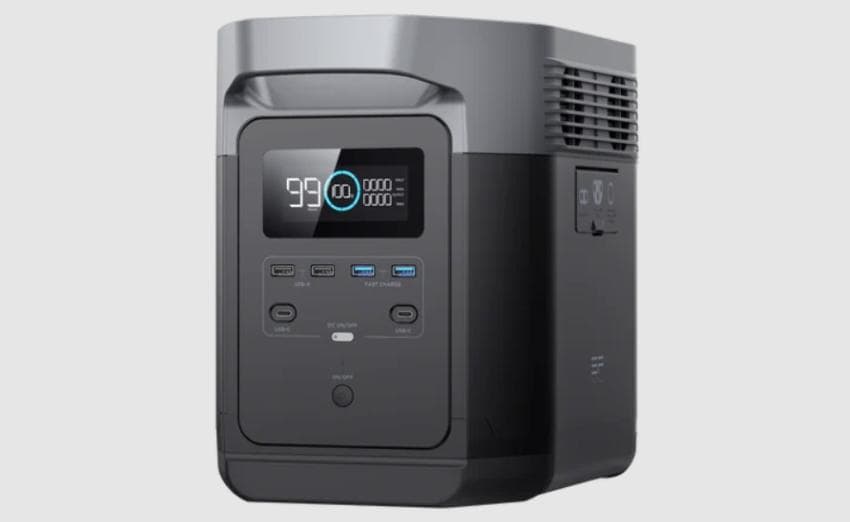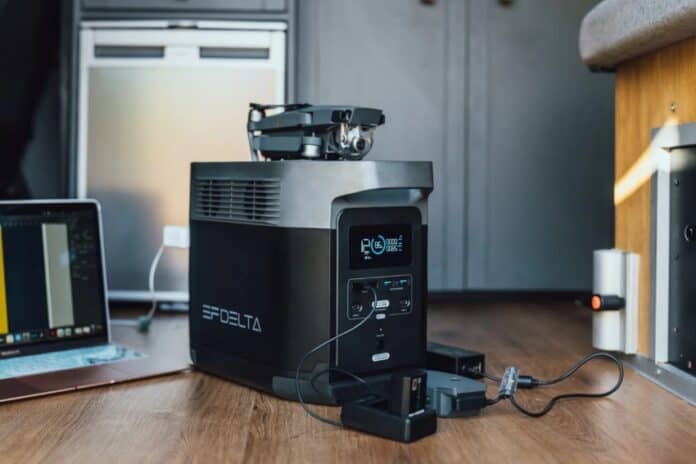A pure sine wave inverter is a key component in ensuring that your sensitive electronic devices receive clean, reliable power. In this article, we’ll dig deeper into everything about pure sine wave inverters, understanding their inner workings and the benefits they offer compared to modified sine wave inverters. We’ll also explore situations where a pure sine power inverter is essential to protect your valuable equipment. Let’s get started!
What Is a Pure Sine Wave Inverter?
A pure sine wave inverter is a specialty device that transforms direct current (DC) electricity from sources like batteries or solar panels into alternating current (AC) electricity, generating a smooth and stable power supply that closely mimics the waveform provided by utility companies. Unlike modified sine wave inverters, which produce a distorted AC output, pure sine wave inverters deliver clean and consistent power, making them ideal for powering sensitive electronic devices and appliances without the risk of damage or malfunction.
How Does a Pure Sine Wave Inverter Work?
As mentioned above, a pure sine wave inverter is designed to convert DC (direct current) into AC (alternating current) smoothly and efficiently. Here’s how it works:
1. DC Input: The inverter receives DC input from sources such as batteries or PV solar panels. Just note to always select the right inverter size for home.
2. Pulse Width Modulation (PWM): The inverter uses electronic components to rapidly switch the DC input on and off, creating an approximation of an AC waveform.
3. Filtering: The PWM signal is passed through a filter consisting of capacitors and inductors to remove irregularities and smooth out the waveform.
4. Amplification: The filtered signal is amplified to reach the desired voltage level.
5. Output: The resulting signal is a pure sine wave AC output ready to power electronic devices and appliances.
The efficiency and effectiveness of a pure sine wave inverter rely on the quality of its components and the precision of its control circuitry. High-quality inverters employ advanced technology and digital signal processing to ensure that the output closely matches the ideal sine wave, guaranteeing a stable and reliable power supply for connected devices.
Pure Sine Wave vs Modified Sine Wave: What Are the Differences?
Pure sine wave inverters and modified sine wave inverters differ in several key aspects:
| Aspect | Pure Sine Wave Inverter | Modified Sine Wave Inverter |
| Waveform | Smooth, grid-like sine wave | Approximates square or stepped waveform |
| Compatibility | Highly compatible with sensitive electronics and appliances | Less compatible with sensitive electronics, may not run efficiently |
| Efficiency | High efficiency, low harmonic distortion | Generally less efficient, potential energy losses |
| Applications | Ideal for sensitive devices, medical equipment, appliances, off-grid living | Suited for basic power needs, lighting, heaters, simple tools |
The choice between a sine wave inverter is modified depending on the specific needs and the equipment being powered. Pure sine wave inverters are the superior choice for sensitive electronics and critical applications that require clean and stable power. Modified sine wave inverters may suffice for basic power needs in less sensitive settings.
When Do You Need a Pure Sine Wave Inverter?
Here are some note-worthy situations where a pure sine wave inverter is essential:
1. Sensitive Electronics: Pure sine wave inverters are best for powering sensitive electronic devices like PC, laptops, servers, and audio/video equipment, ensuring their reliable performance and longevity.
2. Medical Equipment: In medical settings, pure sine wave inverters are essential for maintaining uninterrupted patient care by powering devices such as CPAP machines, oxygen concentrators, and medical imaging equipment.
3. Industrial Equipment: Industrial machines and equipment with sensitive control systems and motors require clean power from pure sine wave inverters for optimal performance.
4. Audio and Video Production: Studios and production houses rely on pure sine wave inverters to keep audio and video equipment running, preventing interference, audio buzz, and visual distortions.
5. Telecommunications: Pure sine wave inverters are used to maintain seamless communication operations by providing a stable power supply to telecommunication equipment, including cell towers and data centers.
6. Residential Backup Power: During power outages, pure sine wave inverters are necessary to maintain the proper functioning of home appliances, including refrigerators, air conditioners, and security systems.
7. Recreational Vehicles (RVs): RV owners depend on pure sine wave inverters for powering appliances and electronics on the road, ensuring a comfortable and convenient living experience.
8. Off-Grid Living: For those living off the grid, pure sine wave inverters provide a comfortable and modern lifestyle by efficiently powering all appliances and devices without damage. For example, the EcoFlow DELTA 1300 Portable Power Station is a great option for the off-grid solar system. It offers solar energy charging, allowing you to power up to 11 devices simultaneously with its pure sine wave outlets. Plus, it’s a versatile solar generator that charges quickly and can be used for everything from sensitive electronics to heavy-duty tools, making it ideal for off-grid setups.

Conclusion
Indeed, the pure sine wave inverter provides clean, stable, and reliable AC power that enables various devices’ safe and efficient operation. When closely compared to modified sine wave inverters, the pure sine wave inverter emerges as the superior choice for powering sensitive electronics and ensuring optimal performance. As you navigate the various scenarios where a pure sine wave inverter is valuable, remember that investing in this technology is an investment in the quality and longevity of your electrical devices.
FAQs
What is the difference between an inverter and a pure sine wave inverter?
A standard inverter (often called a modified sine wave inverter) produces a stepped or square waveform that approximates AC power, while a pure sine wave inverter generates a smooth, sinusoidal waveform that closely mimics utility-supplied electricity. Pure sine wave inverters are way more compatible with sensitive electronics, offer higher efficiency, and are ideal for diverse applications, including medical equipment and off-grid solar system.
What are the disadvantages of a pure sine wave inverter?
The main disadvantages of a pure sine wave inverter are its higher cost compared to modified sine wave inverters and its slightly lower efficiency. These inverters are typically more complex and require more sophisticated components, which contributes to their increased price point.
What is the benefit of a pure sine wave inverter?
Pure sine wave inverters offer many benefits, including high compatibility with sensitive electronics, efficient operation, reduced electronic noise, prevention of device overheating, enhanced motor efficiency, and universal device compatibility. They are particularly advantageous for medical equipment, audio/video production, and off-grid living. When paired with solar panels, they can convert solar energy into clean, stable power that closely resembles utility-supplied electricity.
What appliances need a pure sine wave inverter?
Appliances that typically require a pure sine wave inverter include medical equipment, laser printers, newer televisions, audio equipment, and certain power tools. Moreover, any device with an AC motor or a microprocessor may function more efficiently and safely with a pure sine wave inverter.
